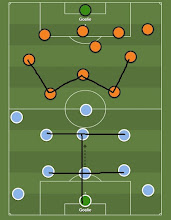The new player loan
system, which was introduced in 2022, has been one of FIFA’s attempts to make
changes to a rather distorted football transfer system.
The reformed loan
system has been on the news again this month as clubs are considering the loan
move, either in or out, for some of their unused players looking for more
minutes to play, out-of-favour figures in the squad estranged by the manager,
or young players looking to improve themselves. Such a new system is currently
in the transition period before its final amendment in the 2024/25 season.
The Goal
FIFA’s objective in
this overhaul, alongside the modified regulation for the players’ agents, is
none but to leave no more space for the clubs to hoard young talents and then
loan them out to any clubs without any limits in duration or even any chance
for them to be included in the first team squad. Moreover, this will help
create more balance in the competition as well.
The previous rule had
already crushed the youngsters’ dreams. Should they have difficulty keeping
themselves motivated to develop themselves until they find the right clubs that
are willing to give them the opportunity to grow,.
Chelsea had been one
example of the clubs which took advantage of the previous regulation. They are notorious for
stockpiling young stars only to send them on loan without supporting them to
shine at Stamford Bridge. Not all players who have been kept on loan for long
could be fortunate and thrive well, like Kevin de Bryune, Romelu Lukaku, or Mo
Salah. There are some others whose careers have hit the reef, such as Lucas
Piazon, Marco Van Ginkel, or Gael Kakuta. They just end up being average
players and will never get the chance to play on top teams.
The Details
The world football
governing body was already targeting modifying the transfer system in 2017. It
was originally set to come into force in July 2020 but was delayed due to the
world pandemic. Here are the details of the new rules on loaning players:
- Each club could only loan in and out a maximum of eight
players abroad starting in the 2022/23 season. The numbers will decrease
in the following season to seven players and six players in 2024/25 onward.
- Each club is also limited to having three loan signings
in and out to one domestic side.
- Players can only be sent on loan for a maximum of a
year.
- A maximum of three players are allowed to be on loan to
one certain club in a single season.
- Players who are the subject of this regulation must be
at least 21 years old and not the product of the club’s academy or trained
by the club since their youth.
- The sub-loaning practice (loaning out the players who
are still on loan) is considered a violation.
- The loan deal details must be provided in a written
agreement to define the terms of the loan, which include the financial
conditions, duration, etc.
- The domestic loan regulations by each national football
association must be introduced in line with FIFA's no later than
July 1, 2025.
FIFA’s efforts inimproving the transfer system should be well appreciated to protect players’future. Hopefully, they would also consider doing the same with the official
rule to reduce the heading in football for the sake of players’ wellness once
they hang their boots.


Comments
Post a Comment